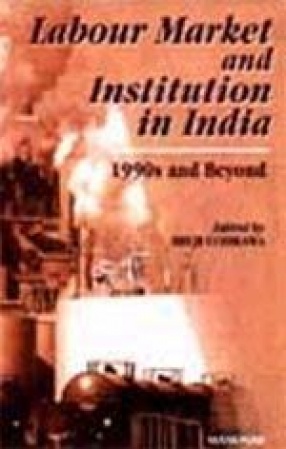The purpose of this study is to examine change of institution inn labour market after economic reforms. A dynamic element was introduced in the economy with reforms in an effort to achieve more flexibility in the system. The introduction of flexibility in the labour market led to some displacement of labour and an informalization of the labour force. On the other hand, reallocation of labour from declining to profitable sectors took place significantly within the organized sector and between the organized and the unorganized sector. Labour market is different from other markets in role of institution. Institution plays an important role in labour market. At macro level, not only labour laws and trade unions but also subcontracting affect market. The value of subcontracting activity was growing at a faster rate than growth rate of ouotput in organized manufacturing during the 1990s. At micro level, wage of employees depends on recruitment and promotion system and labour management. External and internal labour market institutions are primarily concerned with fairness in the distribution of workload and wages, within the non-market framework of the employment relation. Economic reforms had different impacts on industries and sector. We analyse the organized sector, the unorganized sector, the financial sector, declining sector and subcontracting sector.
Labour Market and Institution in India: 1990s and Beyond
In stock
Free & Quick Delivery Worldwide
reviews
Bibliographic information
Title
Labour Market and Institution in India: 1990s and Beyond
Author
Edition
1st Ed.
Publisher
ISBN
8173044864
Length
183p., Figures; Tables; Index; 23cm.
Subjects






There are no reviews yet.